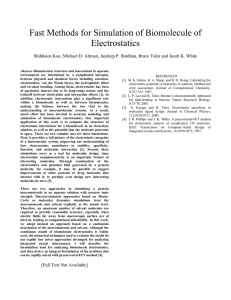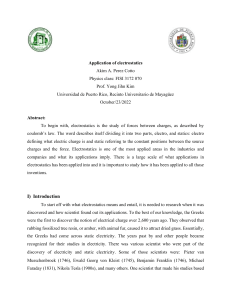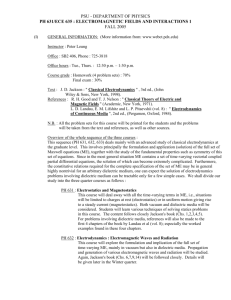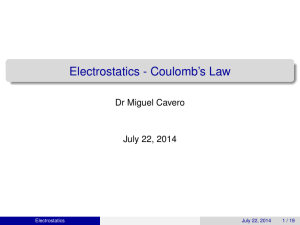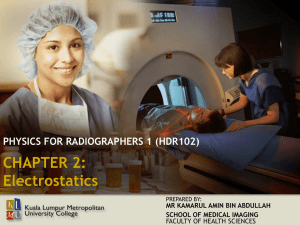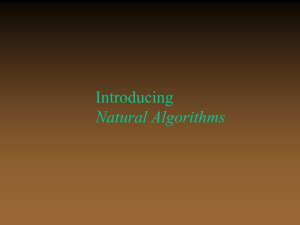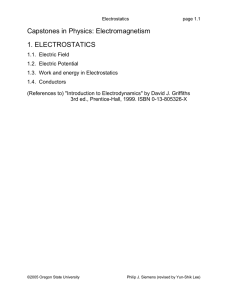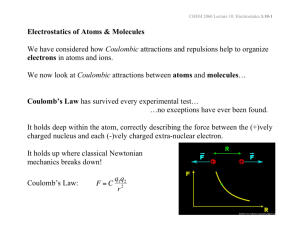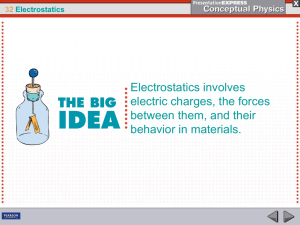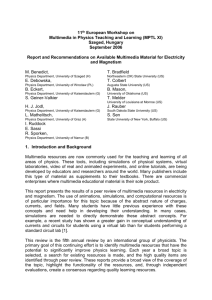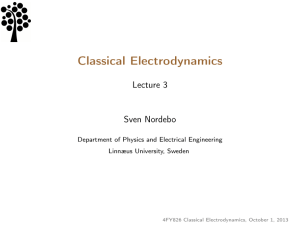Practice Problems
advertisement
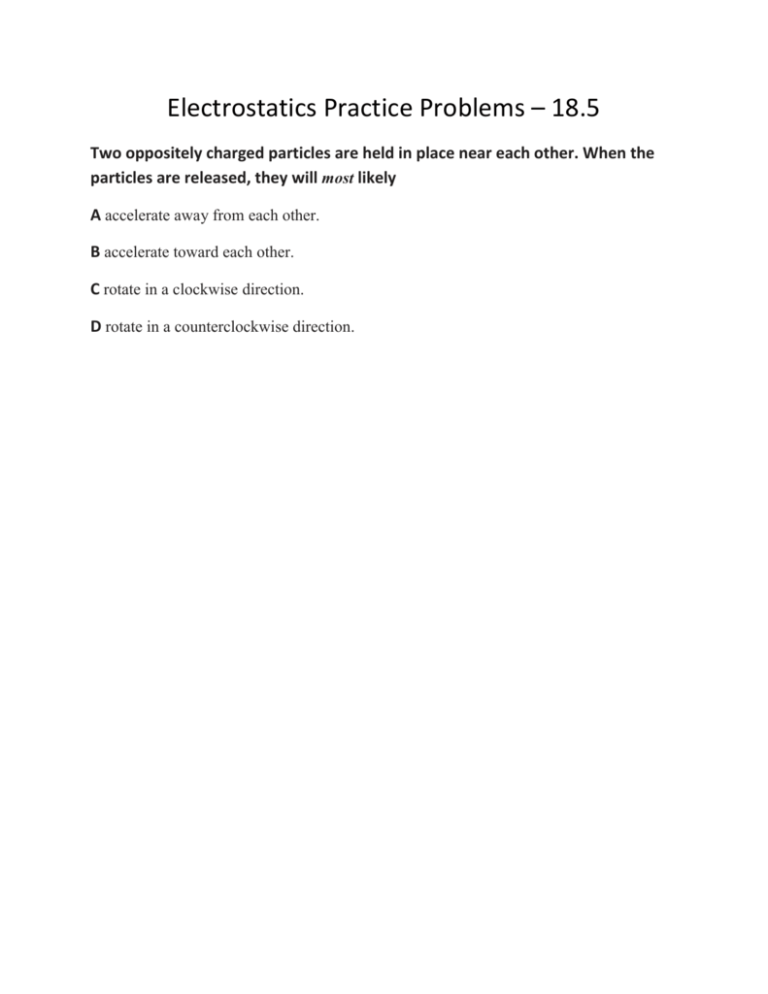
Electrostatics Practice Problems – 18.5 Two oppositely charged particles are held in place near each other. When the particles are released, they will most likely A accelerate away from each other. B accelerate toward each other. C rotate in a clockwise direction. D rotate in a counterclockwise direction. Electrostatics Practice Problems – 18.5 Two like charged particles are held in place near each other and a force F is measured between them. When the particles are moved four times further apart the new force measured between them is: A the same. B four times greater. C one sixteenth times less. D sixteen times greater. Electrostatics Practice Problems – 18.5 A Beta particles is an electron. Consider two Beta particles held in place separated by 10.0 cm. The magnitude of the force on one of them is: A 1.44 x 10 -7 N B 2.30 x 10 -26 N C 2.30 x 10 -27 N D 2.30 x 10 -30 N qe = 1.60 x 10-19 C Electron Charge = Beta Particle Charge Electrostatics Practice Problems – 18.5 Consider an array of four positively charged particles held in place on the vertices of a square. What direction would the net force on the charge in the upper right corner point? A to the right. B straight downward. C down and to the left (3rd quadrant) D up and to the right (1st quadrant) Electrostatics Practice Problems – 18.5 Consider an array of three protons held in place on the vertices of an equilateral triangle with 1.00 m length sides. Predict and calculate the net force on the proton at the top of the triangle. A 2.96 x 10-26 N @ 270. degrees B 2.96 x 10-26 N @ 90.0 degrees C 1.48 x 10-24 N @ 90.0 degrees D 3.99 x 10-28 N @ 90.0 degrees Electrostatics Practice Problems – 18.6 Consider a positive point charge held stationary in a region of space. If a second point charge was brought into the same region of space, what would tell the second point charge how much force feel? A The electric energy field. B The gravitational potential energy field. C The electric force field created by the first point charge. D The electric force field created by the second point charge. Electrostatics Practice Problems – 18.6 Consider a positive point charge held stationary in a region of space. What direction does the electric force field created by the point charge point? A Upward. B The same as the direction of force on a neutral charge. C The same as the direction of force on any massive object. D The same as the direction of force on a positive “test” charge. Electrostatics Practice Problems – 18.6 Consider a negative point charge, q = -56 µC, held stationary at the origin of a standard Cartesian coordinate system. Predict and calculate the electric force field at x = 25 cm, y = 0 cm. A 8.1 x 102 N/C @ 180˚ B 8.1 x 1012 N/C @ 180˚ C 8.1 x 106 N/C @ 0.0˚ D 8.1 x 106 N/C @ 180˚ E 8.1 x 102 N/C @ 0.0˚ Electrostatics Practice Problems – 18.6 Consider a negative point charge, q = -56 µC, held stationary at the origin of a standard Cartesian coordinate system. Predict and calculate the electric force field at x = 30 cm, y = 40 cm. A 2.0 x 106 N/C @ 53˚ B 2.0 x 102 N/C @ 0.0˚ C 2.0 x 106 N/C @ 45˚ D 2.0 x 106 N/C @ 233˚ E 2.0 x 106 N/C @ 180˚
